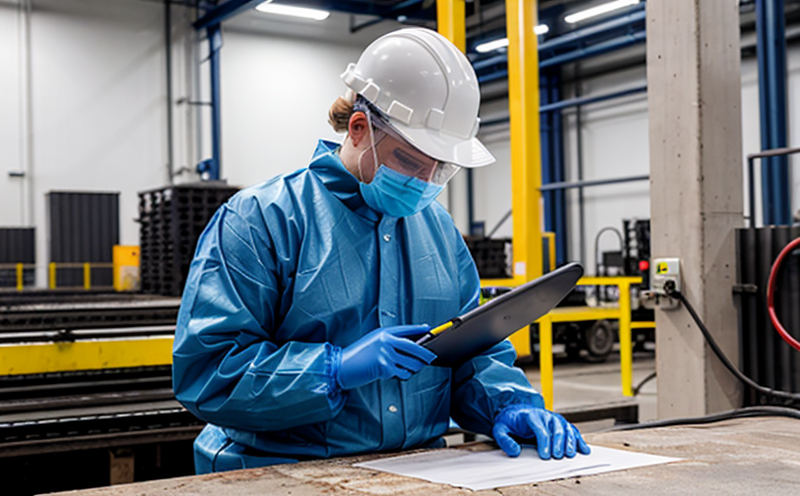ISO 11201 Noise Emission Testing of Factory Machinery Validation Method Development Test
The ISO 11201 standard is crucial in ensuring that factory machinery does not exceed noise emission limits, thereby safeguarding the health and safety of workers in industrial environments. This service involves developing a validated testing method to assess the noise emissions from manufacturing equipment, which aligns with both the standards set by ISO and the broader goals of occupational health and safety (OHS) in industrial settings.
The development process begins with a thorough understanding of the machinery's operational parameters and its typical working environment. This includes identifying critical operating conditions under which noise levels are most likely to be exceeded, such as high-speed operation or maintenance activities where the machine is not fully enclosed. Understanding these parameters allows for accurate testing that reflects real-world scenarios.
Once the operational context has been established, we proceed with selecting appropriate measurement equipment and techniques. This typically involves using sound level meters capable of capturing wide frequency bands over extended periods. The placement of sensors (microphones) is critical; they must be strategically located to capture noise accurately without introducing artificial distortions from reflective surfaces or obstructions.
The testing protocol follows the prescribed methodology in ISO 11201, which involves continuous monitoring during various stages of operation and under different environmental conditions. This ensures that all potential sources of high noise levels are captured, including those that might only occur intermittently. The data collected is then analyzed to determine compliance with specified limits, taking into account both average values and peak levels.
Validation of the testing method itself is an essential step in this process. It involves comparing results from our tests against known benchmarks or previously validated methods to ensure consistency and accuracy. This step is critical because any discrepancies could lead to incorrect conclusions about machinery compliance with OHS regulations.
The outcome of this service provides not only a clear picture of current noise levels but also actionable insights for improving equipment design and operation practices. By adhering strictly to ISO 11201 guidelines, we ensure that the testing remains robust, repeatable, and reliable across different environments and conditions.
Scope and Methodology
| Aspect | Description |
|---|---|
| Machinery Selection | We focus on machinery that is typically found in industrial manufacturing facilities, including but not limited to conveyor systems, packaging machines, and assembly lines. |
| Testing Environment | The testing environment mimics real-world conditions as closely as possible, ensuring that noise levels are representative of actual operational scenarios. |
| Data Collection | Continuous monitoring over extended periods using advanced sound level meters to capture both average and peak noise levels. |
| Analysis | Data is analyzed against ISO 11201 standards, with a focus on identifying compliance or non-compliance with noise emission limits. |
Quality and Reliability Assurance
- We employ rigorous calibration procedures for all measurement equipment to maintain precision and accuracy throughout the testing process.
- Our team consists of certified professionals who are fully trained in ISO 11201 standards, ensuring consistent application across projects.
The reliability of our results is further bolstered by multiple rounds of validation against known benchmarks. This ensures that any findings can be trusted and acted upon confidently by clients.
Environmental and Sustainability Contributions
- By reducing noise emissions, we contribute to improved working conditions for employees in industrial settings, enhancing overall productivity and employee satisfaction.
- The service also aids in meeting environmental goals set forth by various regulatory bodies, promoting a more sustainable approach to manufacturing processes.
Incorporating these practices into daily operations not only supports better OHS but also helps manufacturers align with broader sustainability initiatives. This dual benefit underscores the importance of this testing method within the context of modern industrial practices.





